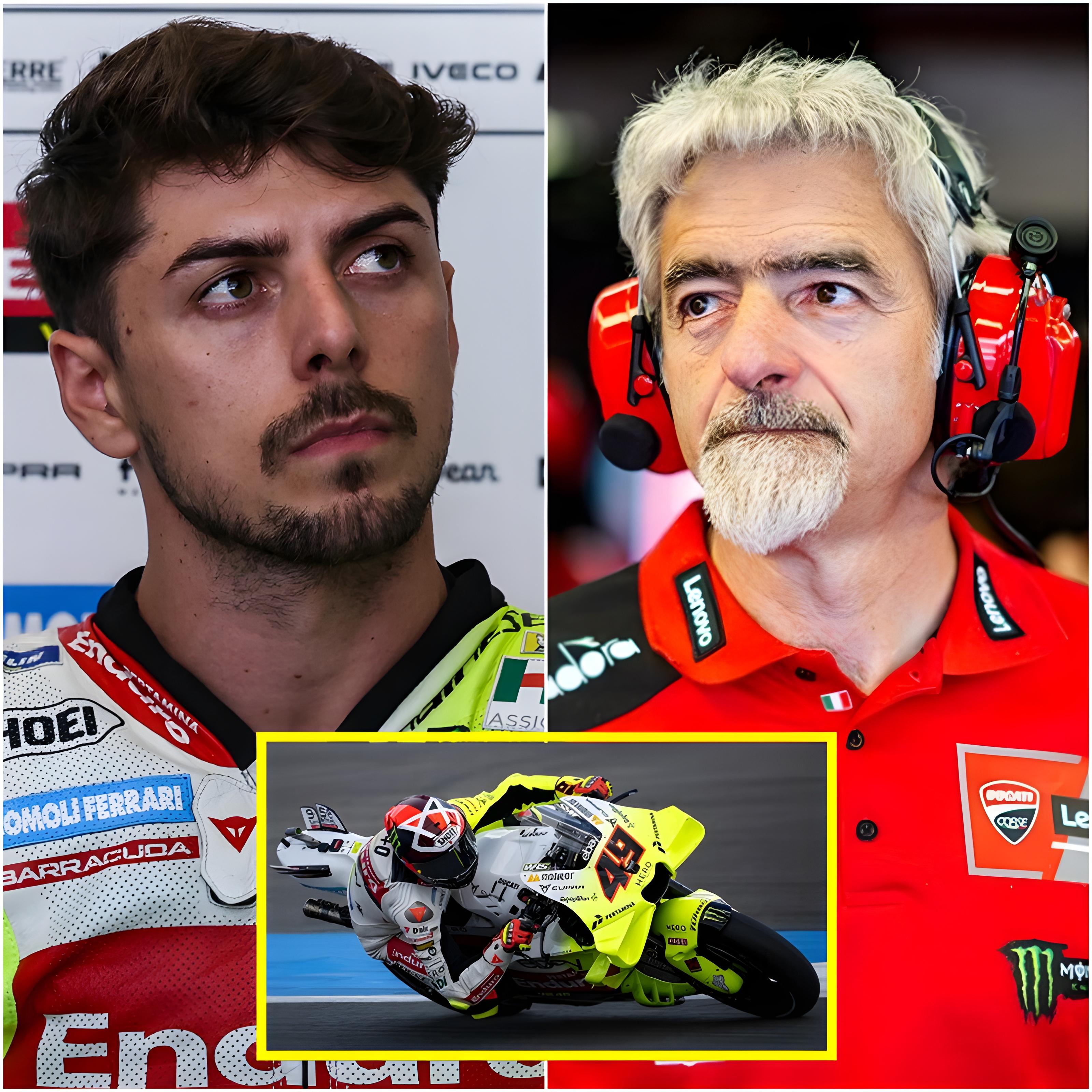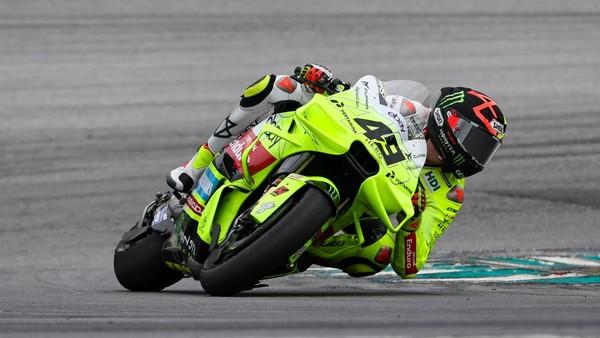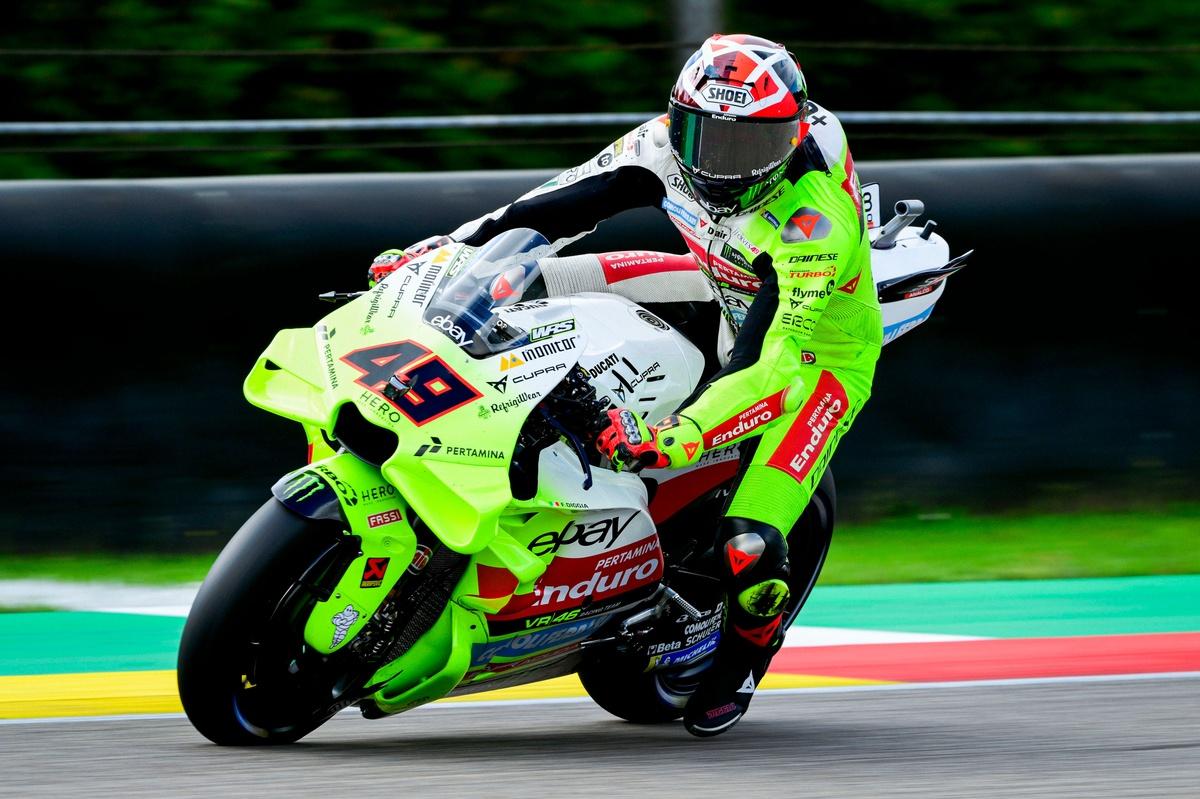As the 2025 MotoGP season unfolds, Ducati finds itself at a crossroads, grappling with a strategic dilemma that could reshape its rider lineup for 2026. Reports indicate that the Italian manufacturer is contemplating a significant decision: potentially removing the factory-spec Desmosedici GP25 from Fabio Di Giannantonio, known as “Diggia,” despite his status as a contracted factory rider through 2026. This move, driven by concerns over his inconsistent performance, has sparked intense debate within the MotoGP paddock. At the same time, Ducati must navigate contractual commitments to rookie Fermín Aldeguer and the rising stock of Alex Marquez, whose stellar 2025 season has made a compelling case for a factory bike. Balancing rider merit, contractual obligations, and political pressures from satellite teams like Gresini and VR46 presents a complex challenge for Ducati’s management.

Di Giannantonio’s journey with Ducati has been a rollercoaster. Riding for the VR46 team, he was granted a factory-spec Desmosedici GP25 for 2025, a privilege shared only with Ducati’s top riders, Marc Marquez and Francesco “Pecco” Bagnaia. However, despite flashes of brilliance, including two podium finishes, his results have been marred by inconsistency, particularly over full race distances. Injuries sustained earlier in the season have hindered his ability to match the pace of his factory teammates, with only 142 points scored in the first 12 rounds compared to Marc Marquez’s commanding 381. Ducati’s technical department, led by Gigi Dall’Igna, has noted that the GP25, tailored with feedback from Marquez and Bagnaia, has delivered nine Grand Prix victories, while the previous-spec GP24, used by Alex Marquez, Aldeguer, and Franco Morbidelli, secured just one. This performance gap has fueled speculation that Ducati may reassign Di Giannantonio to a satellite-spec GP25 in 2026, allowing him to retain his factory contract but on a less demanding machine.

Meanwhile, Fermín Aldeguer’s contract adds another layer of complexity. The 19-year-old Spaniard, signed directly by Ducati before his MotoGP debut, is guaranteed a factory-spec bike for 2026 as part of his two-year deal. Despite a promising rookie season with a podium at Le Mans, Aldeguer’s average finishing position of P8.7 reflects the growing pains of adapting to the premier class. His potential is undeniable, and Ducati’s long-term investment in him is clear, but his inconsistent results have raised questions about whether he is ready for the GP26. Dorna, MotoGP’s governing body, has expressed support for Aldeguer receiving a factory bike, seeing it as a boost for young talent. However, Ducati’s leadership, including CEO Claudio Domenicali, must weigh whether Aldeguer’s promise outweighs the immediate results of other riders.
Alex Marquez, riding for Gresini Racing, has emerged as a dark horse in this equation. His 2025 season has been nothing short of remarkable, with a Grand Prix victory in Spain and six second-place finishes, amassing 261 points. Unlike Aldeguer and Di Giannantonio, Alex is contracted directly to Gresini, not Ducati, which complicates his case for a factory bike. Gresini has been vocal in advocating for Alex to receive a GP26, arguing that his on-track performance surpasses that of some factory-contracted riders. His consistent ability to challenge his brother Marc, the championship leader, on a year-old GP24 underscores his potential to shine with top-spec machinery. Yet, without a direct Ducati contract, his path to a factory bike hinges on negotiations and team politics.

The dynamics between Ducati’s satellite teams, Gresini and VR46, further complicate the decision. VR46, now Ducati’s premier satellite squad after Pramac’s switch to Yamaha, is keen to maintain its status and secure a factory bike for Di Giannantonio or another rider. Gresini, meanwhile, is pushing hard for Alex Marquez, leveraging his results to argue for equal treatment. Ducati’s strategy of supplying only three factory-spec bikes in 2025—due to cost efficiency and technical considerations—has created a bottleneck, with only one spot potentially available for 2026. Reallocating Di Giannantonio’s bike to Aldeguer or Marquez risks straining relationships with VR46, while denying Alex a GP26 could alienate Gresini.
As Ducati looks to 2026, a season expected to be transitional due to new regulations, the case for fielding six identical GP26s grows stronger. This approach would level the playing field, allowing fans to see all riders compete on equal terms and potentially maximizing Ducati’s dominance. However, financial constraints and strategic alliances make this a challenging proposition. With the Desmosedici’s superiority unchallenged, Ducati’s decision will not only shape its 2026 lineup but also signal its priorities in balancing talent, loyalty, and performance in the high-stakes world of MotoGP.





